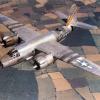B&C Standby Alternator Field Approval
-
Members Online
- Geoff
- 00-Negative
- GeeBee
- Max Clark
- varlajo
- Rwsavory
- redbaron1982
- midlifeflyer
- Z W
- KLudwick
- ELysek1
- Marc_B
- banjo
- Hank
- dsulli16
- LOCOLJ
- Greg Ellis
- TheAv8r
- DXB
- UteM20F
- ta2too
- hammdo
- Gflight
- eman1200
- Gilt
- DMM
- Andy95W
- bixmooney
- chrisburdzy98
- MatthiasArnold
- Flyler
- raymondscott0321
- Mark89114
- Parker_Woodruff
- wombat
- 1980Mooney


Recommended Posts
Join the conversation
You can post now and register later. If you have an account, sign in now to post with your account.